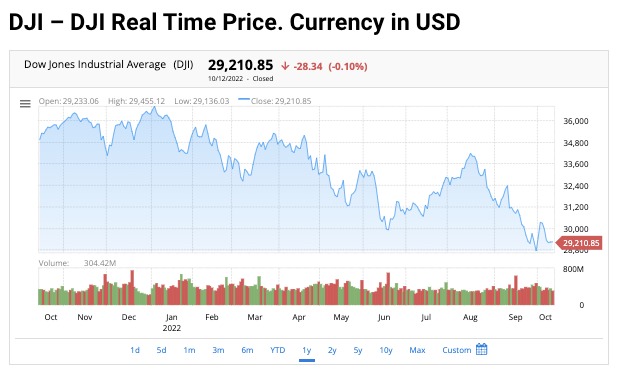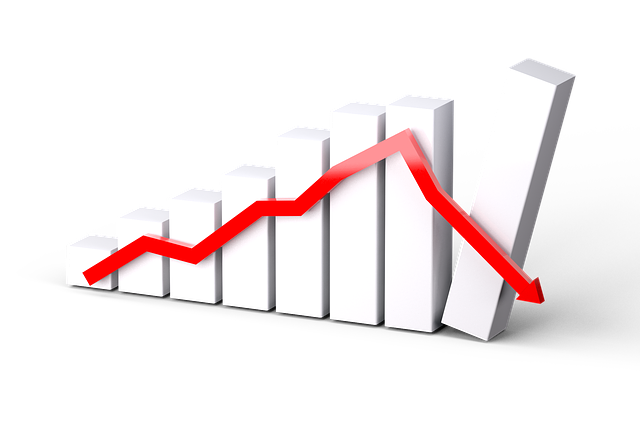It’s no secret that the stock market is a volatile place. What happens during the day can often be dramatically different from what happens after hours for Dow Jones stocks. Unfortunately, for many people, this is when the real trouble begins.
After-hours Trading refers to the phenomenon of stocks continuing to fall even after the market has closed for the day. This can be caused by a number of factors, including panic selling and automated trading programs. Whatever the cause, it can be very costly for an average investor who is not prepared for it.
In this article, we’ll take a look at what after-hours dow is, what causes it, and how you can protect yourself from it.
What Is After Hours Dow?
After Hours Dow is a service that allows people to trade stocks after the stock market has closed for the day for Dow Jones companies. This can be helpful for people who want to buy or sell stocks but can’t do so during regular trading hours.
After Hours Dow also allows people to trade options and futures contracts. The service is available from 4:00 p.m. to 8:00 p.m. Eastern Time, according to normal market hours. There is a fee for using After Hours Dow, but it is generally lower than the fees charged by traditional stockbrokers.
Read Dow Futures Today – What You Need to Know.
What Causes After Hours Dow?
There are a number of factors that can cause after-hours dow (INDEXDJX: .DJI).

1. Panic Selling
One of the most common reasons for after-hours trading is panic selling. This occurs when investors sell their stocks in a hurry without considering the long-term effects of their decision. This can happen when bad news comes out about a company or when there is political or economic turmoil.
2. Earnings Announcements
Another common reason for after-hours trading is earnings announcements. Companies will often release their quarterly or annual earnings after the stock market has closed for the trading day. This can cause a lot of activity in the after-hours market, as investors buy or sell stocks based on the news.
3. Major Events
Major events can also cause after-hours trading. This can include things like natural disasters, terrorist attacks, or even the death of a major figure in the company. These events can cause a lot of uncertainty, and investors may buy or sell stocks in the after-hours orders market in order to take advantage of the situation.
4. Government Actions
Government actions can also cause after-hours trading. This can include things like changes in interest rates or the release of economic data. These events can have a major impact on the stock market with respect to normal trading session, and investors may buy or sell stocks in the after-hours market in order to take advantage of the situation.
5. Technical Glitches
Sometimes, after-hours trading is caused by technical glitches. This can happen when there is a problem with the computer system that handles stock trades. This can cause delays in the market, and it can also cause some trades to go through at different prices than what was originally quoted.
These are just a few of the reasons why after-hours trading can occur. It is important to remember that this type of overnight trading is not for everyone. It can be very risky, and it is important to understand the risks before getting involved.
What Are The Risks Of After Hours Dow?

There are a number of risks associated with after-hours trading, So, the question is what is Dow Jones today?
1. Lower Liquidity
One of the key risks is lower liquidity. This means that there are fewer buyers and sellers in the market, which can lead to wider spreads (the difference between the bid and ask price) and more volatile prices. This can make it difficult to get in and out of trades at your desired price or even to find a buyer or seller at all.
It’s important to remember that just because the market is open for longer doesn’t mean that there will be more trading activity. In fact, after-hours trading volume is typically much lower than during regular market hours.
2. Higher Volatility
Another risk of after-hours trading is higher volatility. This is when prices move up and down very rapidly, making it difficult to predict which way the market data will go. This can be exacerbated by the lower liquidity in the after-hours market, as there are fewer participants to provide stability.
3. Wide Spreads
As we mentioned, lower liquidity can lead to wider spreads. This is the difference between the bid price (the highest price a buyer is willing to pay) and the asking price (the lowest price a seller is willing to accept). Wider bid-ask spreads can eat into your profits or increase your losses if you’re not careful. For example, let’s say you’re trying to buy shares of a stock that’s trading at $10.00 per share.
If the bid-ask spread is $0.03, you’ll be able to buy the shares for $10.03. But if the spread widens to $0.10, you’ll have to pay $10.10 per share. That extra $0.07 may not seem like much, but it can add up quickly if you’re trading large quantities of shares.
4. Extended Hours Price Limits
Some exchanges have what are called extended hours price limits. This means that prices are allowed to move only a certain percentage above or below the stock’s closing price from the previous regular trading after hours session. For example, if a stock closes at $10.00 per share, the price limit might be 10%, so the stock would be allowed to trade between $9.00 and $11.00 during extended hours of trading.
These limits are put in place to prevent stocks of fewer market participants from becoming too volatile after the regular market closes. However, they can also make it difficult to execute trades at the prices you want.
5. No Guarantee Of Execution
Finally, it’s important to remember that there’s no guarantee your trade will be executed during normal trading hours of trading. Unlike the regular market, where there are numerous buyers (market makers) and sellers all vying for after hours trade, the after-hours market is much more thinly traded. This means that it may be difficult to find a buyer or seller for your shares, or you may have to accept a lower price than you’re hoping for.
While there are risks associated with after-hours trading, there are also potential rewards within after-hours sessions. By understanding the risks and being aware of the possible pitfalls, you can put yourself in a better position to succeed.
Conclusion
Now that you know what after-hours trading is and the risks involved, you can decide if it’s right for you. If you do decide to trade after hours, be sure to use limit orders and keep a close eye on the market. Remember, after-hours regular trading session is a risky business, so tread carefully. Be sure to consult with a financial advisor to get the most accurate information before making any decisions.


